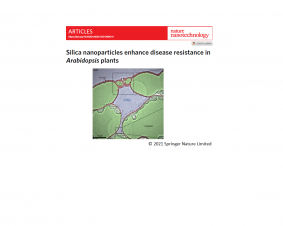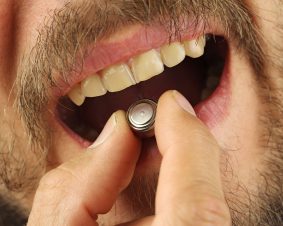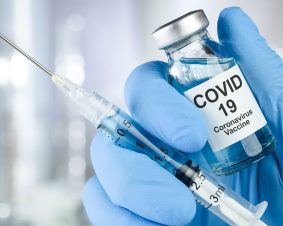 >
Spotlight October 2020: Nanosafety – Topic of the Future
>
Spotlight October 2020: Nanosafety – Topic of the Future
Research on nanosafety is a driver of innovation as the spotlight in July has demonstrated. But furthermore, this research field is built on routine as well if researchers look for the “needle in the haystack”. In many areas the safety research initiates the development of new methods, e.g. for the determination of nanoparticles within exposed organisms via the high-resolution analytical scanning transmission electron microscopy (HRSTEM) or helps with the establishment of reliable test guidelines. This and many more topics on body barriers or the immune system are combined in this cross cutting issue about “Future Nanosafety” by Krug and Krägeloh (2020).
This special issue on “Future Nanosafety” sketches organ specific effects of nanomaterials, demonstrates examples for new applications and offers new insights into biological mechanisms affected by nanomaterials. This collection of 17 scientific articles from important labs all over the world presents not only operation procedures for future test methods but includes also alternatives for animal testing or safe-by-design processes and introduces new detection methods for nanoparticles in the body or in consumer products.
Original Publication:
Harald Krug and Annette Kraegeloh (2020), Future Nanosafety. Chem. Res. Toxicol. 2020, 33, 5, 1037–1038. DOI: 10.1021/acs.chemrestox.0c00166

Weitere Spotlights
Spotlight December 2021: Silica nanoparticles improve plant disease resistance
The resistance of plants to various pathogens is often increased in agriculture with various chemicals (“fertilizers”). A new direction is being taken with the use of nanoparticles. These can be sprayed on the plants. In the present study, the model plant Arabidopsis was used to investigate whether silicon dioxide nanoparticles (SiO2) can increase resistance to […]
Read moreSpotlight May 2023: Dual energy – edible batteries
An Italian research group reports on edible batteries that supply electric current and can be digested as food, thus providing energy a second time. What sounds funny at first has a serious background, because in medicine, power sources are needed that could be transported through the digestive tract and possibly remain in the body unintentionally, […]
Read moreSpotlight February 2021: Nanoobjects in the COVID-vaccine – scientifically correct?
The COVID-19 pandemic induces very different reactions of people on the internet (https://www.cdc.gov/mmwr/volumes/70/wr/mm7002e1.htm) and in the social networks. Without following the conspiracy theories as “5G nanochip hidden in COVID vaccines” some news as “COVID vaccines induce allergic reactions” should be scientifically recognised. The picture from the 5G-nanochip whose plan goes viral on the internet is […]
Read moreSpotlight May 2022: Nano-ghosts” – Risk assessment of submicron-sized particles in food biased towards fictional “nano”
The European Commission has issued a ban on the colorant titanium dioxide in food. Titanium dioxide, which provides a nice shine and bright white color, can potentially damage genetic material. We chose a review article from 2022 for the May 2022 Spotlight that addresses the risk assessment of food-grade titanium dioxide (E171) and the resulting […]
Read more


